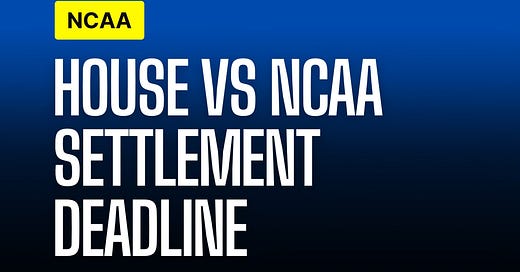In a historic move that stands to reshape the landscape of college athletics, Judge Claudia Wilken has granted preliminary approval for a transformative $2.8 billion settlement in the House v. NCAA lawsuit. This groundbreaking development paves the way for unprecedented changes in how college sports are structured and how athletes are compensated.
What is the House v. NCAA Settlement?
The House v. NCAA lawsuit challenges the NCAA’s long-standing restrictions on compensating college athletes beyond scholarships and stipends. The preliminary approval of this settlement marks a monumental shift toward revenue sharing between schools and athletes. Starting as early as the 2025-26 school year, schools will have the ability to share up to $22 million annually with players.
This settlement also includes provisions that could increase roster sizes, extend scholarships to all rostered players, and bolster enforcement mechanisms within the NCAA to ensure compliance with the new regulations.
Key Milestones in the Settlement Process:
October 18, 2024: Former players are notified of the settlement and a claims period begins for eligible athletes.
December 17, 2024: The projected amount of money to be distributed is made public.
January 31, 2025: Deadline for athletes to submit claims for compensation, opt out of the settlement, or bring objections to court.
April 7, 2025: Final court hearing for settlement approval, coinciding with the NCAA men’s basketball national championship.
Who is Eligible for Compensation?
Athletes who participated in NCAA sports between 2016 and the start of the Name, Image, and Likeness (NIL) era in 2021 are eligible to submit claims for compensation. This eligibility spans multiple sports, offering financial opportunities to countless former athletes.
What Does This Mean for Current and Future Athletes?
The settlement is poised to deliver lasting benefits for college athletes, including:
Revenue Sharing: Schools can share up to $22 million annually with athletes.
Increased Roster Caps: More athletes may have the opportunity to join collegiate teams.
Expanded Scholarships: Scholarships could become available to all rostered players, eliminating the gap that previously left some athletes without financial support.
Enhanced NCAA Enforcement: Strengthened regulatory measures aim to ensure fair play and compliance.
How Athletes Can Claim Their Settlement
To claim compensation, eligible athletes should follow these steps:
Stay Informed: Monitor updates from the NCAA and legal teams involved in the settlement.
Submit a Claim: Between October 18, 2024, and January 31, 2025, eligible athletes must submit a formal claim to be considered for compensation.
Review the Distribution Amount: On December 17, 2024, the projected distribution amounts will be made public. Athletes should review this information to understand their potential compensation.
Make a Decision: Athletes can choose to accept the settlement, opt out, or raise objections by January 31, 2025.
Why This Matters for Athletes
This settlement is a monumental win for college athletes who have long contributed to the success of collegiate sports without sharing in the financial rewards. By enabling revenue sharing and expanding scholarship opportunities, this agreement recognizes the value that athletes bring to their institutions and provides them with long-overdue benefits.
As we look ahead to the implementation of these changes, it is crucial for current and former athletes to stay engaged and informed. The Athlete’s Advocate is committed to providing updates and resources to help athletes navigate this new era of college sports.




